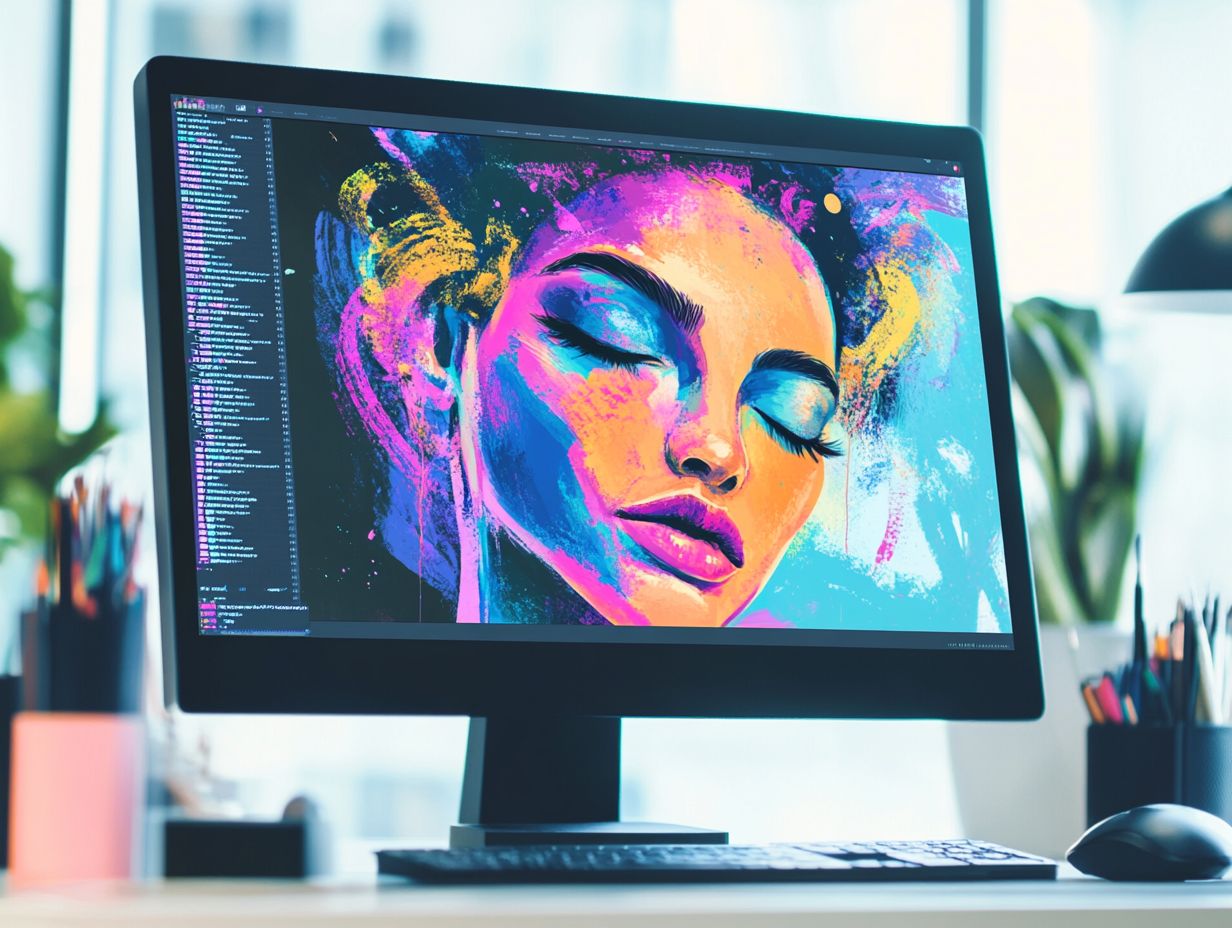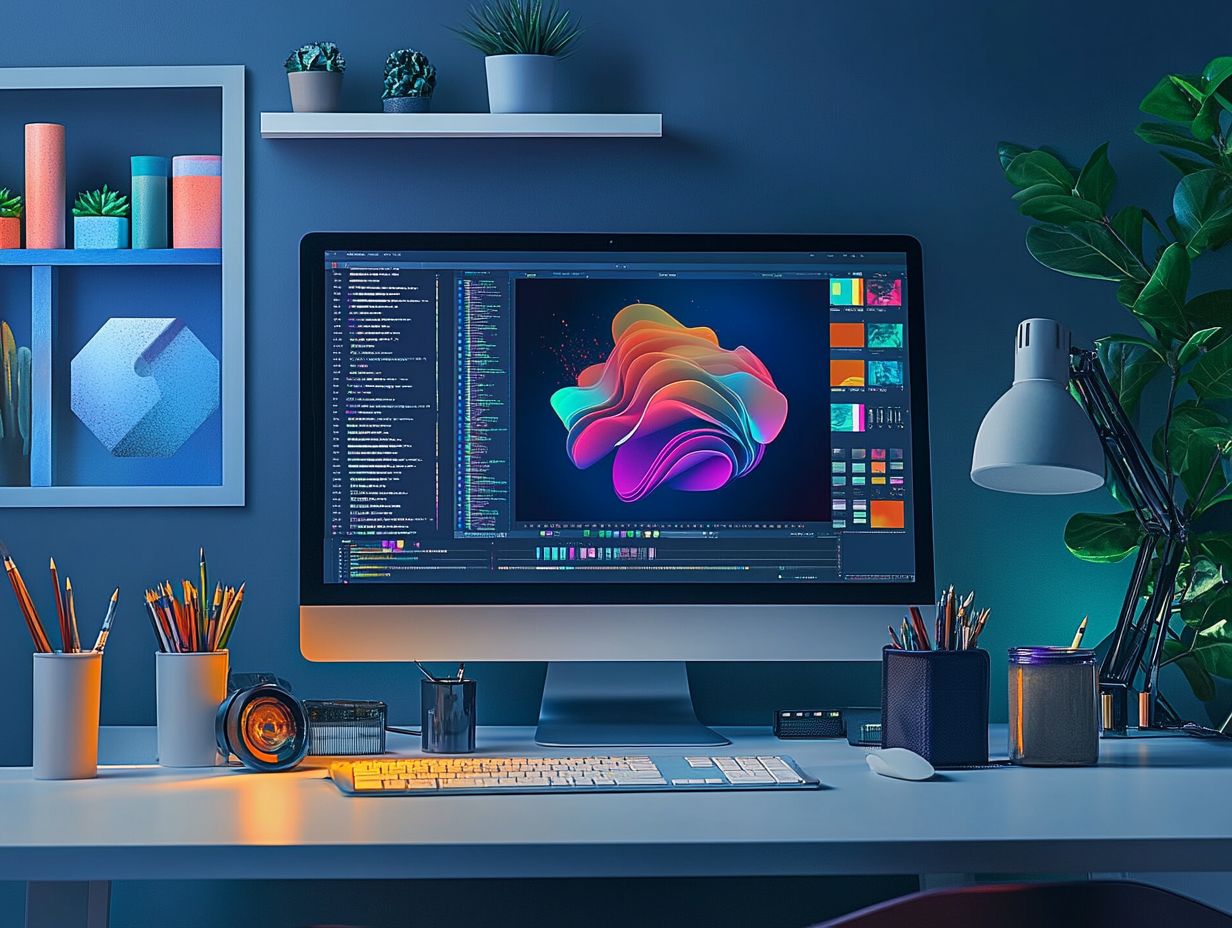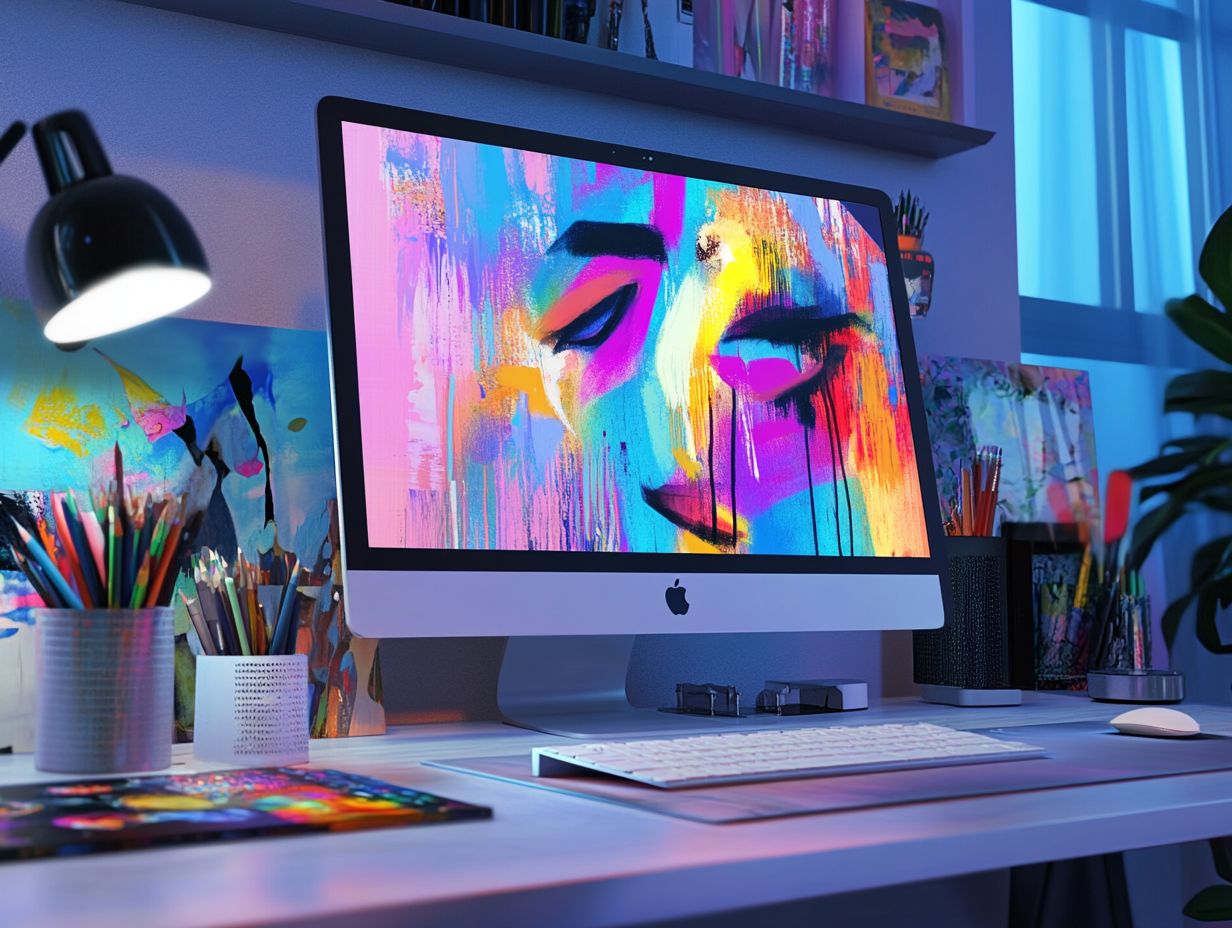In a world increasingly driven by visuals, image generators have become powerful tools that transform ideas into images with just a few clicks.
Whether one is an artist seeking inspiration, a marketer in need of eye-catching graphics, or simply curious about the technology, understanding the various types of image generators—such as deep learning models, GANs, and style transfer systems—can enhance creative projects.
This article will explore the top image generators available today, how to choose the right one for specific needs, and tips to maximize their potential.
Explore how these innovative tools can change the image creation process.
What are AI Image Generators?

AI image generators are sophisticated software tools that use deep learning and generative adversarial networks (GANs) to produce AI-generated images based on textual descriptions. These tools leverage neural networks to create images that can vary from photo-realistic representations to abstract art pieces. This technology has transformed the field of visual art, allowing artists and designers to explore new avenues of creativity and artistic expression.
By utilizing large datasets, these generators learn complex patterns and characteristics of different art styles, enabling the creation of unique compositions that incorporate various influences. Their applications go beyond fine art, affecting industries such as advertising, where visuals need to quickly capture audience attention, and gaming, where immersive environments can be generated in real-time.
As AI image generators continue to advance, user-friendly interfaces promote collaboration between humans and machines, fostering emerging trends in AI-driven creativity that question traditional views of authorship and artistic ability.
Types of AI Image Generators
There are various types of AI image generators, each possessing unique algorithms and capabilities designed to meet different artistic needs and preferences.
These range from deep learning generators, which prioritize realistic image synthesis, to Generative Adversarial Networks (GANs) that produce diverse outputs through adversarial training. The field of AI image generation is marked by significant innovation.
Additionally, style transfer generators enable users to apply the artistic style of one image to another, effectively merging creativity with technology.
Deep Learning Generators
Deep learning generators are a type of AI image generator that utilize neural networks to create high-quality, AI-generated images with impressive photo-realistic capabilities. These systems are trained on extensive datasets, which enable them to understand and replicate complex patterns, textures, and compositions, ensuring that the resulting images closely resemble real-world visuals.
Typically, these generators use architectures such as Generative Adversarial Networks (GANs) or Variational Autoencoders (VAEs). These models consist of two main components: a generator that produces images and a discriminator that assesses them. This adversarial framework allows for continuous improvement, leading to increasingly refined image outputs.
The availability of large amounts of training data, covering various styles and subjects, plays a crucial role in enhancing the versatility and accuracy of the generated images.
Consequently, platforms like DALL-E and Midjourney have become popular for their capability to generate impressive visual content for advertising, art, and virtual reality, highlighting the significant benefits that deep learning generators provide in terms of image quality and resolution.
GANs (Generative Adversarial Networks)
Generative Adversarial Networks, or GANs, are a notable class of AI image generators that consist of two neural networks—the generator and the discriminator—that collaborate to produce and enhance image diversity. The generator produces new images, while the discriminator assesses them against real images, resulting in an iterative process that improves the algorithm’s efficiency and creative output.
This interaction between the networks fosters a competitive environment and accelerates the refinement of the generated images, leading to significant photorealism and intricate detail. In recent years, GANs have been applied in various creative fields, including art, fashion, gaming, and virtual reality, allowing artists and designers to expand their creative possibilities.
Notable uses of GANs include AI-generated artwork displayed in prestigious galleries and the creation of virtual models in the fashion industry. As this technology give the power tos creators to explore new avenues, its impact goes beyond simple image generation, influencing the landscape of AI-driven creativity and producing unique experiences that were previously considered unattainable.
Style Transfer Generators

Style transfer generators are AI tools that enable users to apply the artistic style of one image to the content of another, resulting in unique AI-generated images that integrate different artistic influences. This technique utilizes complex algorithms that analyze and extract stylistic features from the reference image while maintaining the structure of the target image, leading to an interesting combination of artistic styles.
The underlying principles of this technique include convolutional neural networks (CNNs), which are effective at identifying patterns and features within images. Various algorithms, such as neural style transfer, utilize these networks to apply styles ranging from classical impressionism to contemporary abstract art.
Popular applications like DeepArt and Prisma allow users to experiment with these transformations, enhancing personal photo collections and creating visually appealing art for digital projects. Consequently, many artists and designers integrate style transfer into their workflows, merging traditional art forms with modern technology to achieve remarkable outcomes.
Top AI Image Generators on the Market
The market contains a wide range of AI image generators, each presenting distinct features and capabilities that meet the needs of various users, from hobbyists to professional artists.
Some of the leading AI image generators, such as DALL-E, Midjourney, and Stable Diffusion, offer high-quality images and user-friendly interfaces that support the creative process.
These tools are also being utilized in commercial applications, including marketing and branding, positioning them as valuable resources in today’s digital landscape.
Overview of Features and Capabilities
When evaluating AI image generators, it is important to consider the features and capabilities they provide, as these can significantly influence the user experience and the quality of the generated images.
Key features to look for include customization options, output formats, image resolution, and ease of use, as these aspects contribute to the overall functionality and effectiveness of the tool.
- Customization options enable users to tailor the generation process to their specific requirements, whether that involves selecting styles, adjusting colors, or manipulating certain aspects of the image.
- Ease of use is also essential; a user-friendly interface can simplify the creative process, making powerful tools accessible to beginners as well.
- The variety of output formats, such as JPEG, PNG, and TIFF, is important for ensuring compatibility with different applications and purposes.
By comparing various tools based on these criteria, users can make informed decisions, ensuring they choose an AI image generator that aligns best with their creative goals.
How to Choose the Right AI Image Generator
Selecting the appropriate AI image generator can be a challenging process due to the wide range of options available and the varied needs of users.
To make a well-informed choice, it is important to evaluate specific requirements, such as the desired image resolution, artistic style, and any ethical considerations related to AI technology and copyright matters.
Clarifying goals will help in identifying the most suitable tool for creative projects.
Considerations for Your Specific Needs

When considering the specific needs for an AI image generator, it is important to evaluate various factors that can impact creative output and overall experience. Aspects such as image diversity, scalability, and accessibility should play a significant role in the decision-making process, ensuring that the tool aligns with artistic goals and enhances creative workflows.
Users should assess how scalable the generator is, particularly if they plan to undertake large projects that require the efficient generation of numerous images. Accessibility features are also important, as they enable the tool to be used across different devices and platforms, facilitating the ability to create and edit while on the move.
The significance of image diversity should not be overlooked; having a wide range of styles and options enriches the creative process and allows for unique visual narratives that can appeal to various audiences. Collectively, these factors can greatly influence the effectiveness of the selected generator.
Tips for Using AI Image Generators Effectively
To fully utilize AI image generators, it is important to adopt effective strategies that maximize creative output and enhance the overall experience.
Implementing best practices such as prompt engineering, iterative design, and actively seeking user feedback can help refine results and create impressive AI-generated images that align with your artistic vision.
Best Practices and Techniques
Adopting best practices and techniques is important for optimizing the experience with AI image generators and fostering creativity in projects. Engaging with the user community, utilizing feedback mechanisms, and continuously iterating on designs can significantly enhance the quality of AI-generated images and improve the artistic journey.
By participating in forums, social media groups, and other online platforms, users can share insights, ask questions, and exchange creative ideas. This collaborative environment supports innovation and helps develop a deeper understanding of the tools available.
Actively seeking constructive criticism from peers allows individuals to identify strengths and weaknesses in their design approach. Such feedback is valuable for refreshing techniques and generating new ideas.
Embracing an iterative design process encourages experimentation, enabling artists to refine their concepts and discover unique styles that resonate with their audiences.
Frequently Asked Questions
What is the top AI image generator?

The top AI image generator is an advanced computer program that uses artificial intelligence algorithms to generate images automatically based on specific parameters and styles.
How does an AI image generator work?
AI image generators use deep learning algorithms to analyze and learn patterns from a large dataset of images. These algorithms can then generate new images by combining and manipulating the learned patterns.
What are the applications of AI image generators?
AI image generators have a wide range of applications, including in the fields of art and design, marketing and advertising, and video game development. They can also be used for creating realistic images for virtual and augmented reality applications.
What sets the top AI image generator apart from others?
The top AI image generator stands out for its advanced AI algorithms, superior image quality, and versatile customization options. It also has a large and diverse dataset, allowing for more realistic and diverse image generation.
Are there any limitations to AI image generators?
While AI image generators are highly advanced and can produce stunning results, they still have limitations in terms of creativity and understanding context. They also require a substantial amount of training data to operate effectively.
What is the future of AI image generators?
The future of AI image generators is exciting, as they continue to improve and evolve with advancements in artificial intelligence technology. They may eventually be able to create entirely new and unique images, challenging the boundaries of human creativity.
